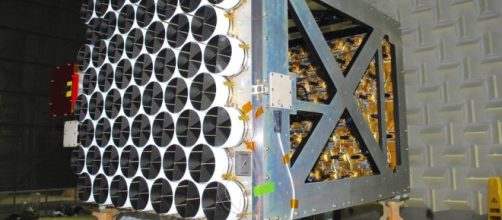The Neutron Star Interior Composition Explorer (NICER) is projected to study neutron stars through a technology named soft X-ray timing. It will also use its technology capabilities to prove space navigation. This technological platform will operate on board the international space station. It´s scheduled to be launched in February 2017 at Cape Canaveral, Florida.
NICER
This explorer is equipped with 56 aligned optics and X-ray sensors that will be able to resolve thermal and non-thermal emissions of neutron stars in the soft 0.2 to 12 KeV X-ray spectrum, which is less energetic than the X-rays used in medical institutions.
This technology will help reveal the structure and interior dynamics that power the mechanisms of neutron stars. NICER will also enable the first proof of pulsar based navigation by a spacecraft.
On board the international space station platform, NICER ‘star tracker pointing system permits the XTI to locate astronomical targets over a wide range of view. This piece of equipment, along with NICER’s GPS-based absolute timing, enables very high precision pulsar light curve measurements.
What is a neutron star?
These types of stars are the densest and smallest stars in the universe. They are formed when a massive star runs out of fuel, exploding in a supernova. They´re composed principally of neutrons and possess some of the strongest magnetic fields, and their gravitational field exceeds by several billion times that of earth; only black holes are known to exceed this gravitational force.
Pulsars
Neutron stars that rotate emit beams of light at regular intervals and are known as pulsars. Pulsars can rotate several hundreds of times every second, emitting beams of light in the spectrum of radio to gamma rays, which are detected when they cross the orbit of earth. NICER technology, the Station Explorer X-ray Timing and Navigation Technology (SEXTANT) will utilize pulsations as beacons to demonstrate space navigation.
NICER is scheduled to be launched from Cape Canaveral in Florida in February 2017. It´s planned to have a usable span time in space of 18 months. This mission´s results are planned to be available on science papers by late summer, 2017.

